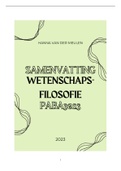Exam (elaborations)
Test Bank for Biochemistry, 10th Edition by Jeremy Berg
- Module
- Institution
Test Bank for Biochemistry, 10th Edition by Jeremy Berg, Gregory Gatto Jr.; Justin Hines; John L. Tymoczko; Lubert Stryer. Full Chapters test bank are included - Chapter 1 to 32 1 Biochemistry in Space and Time 2 Protein Composition and Structure 3 Binding and Molecular Recognit...
[Show more]






